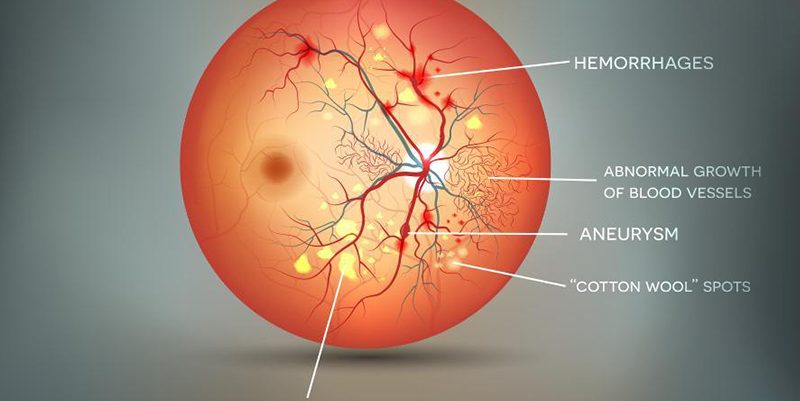Diabetic patients are at higher risk of developing eye diseases like diabetic retinopathy, diabetic macular edema (DME), cataract, and glaucoma. These forms of diabetic eye disease affecting retina, macula, lens and optic nerve can lead to vision loss and blindness. Retina is a light-sensitive tissue at the back of the eye. The retina detects light and converts it to signals sent through the optic nerve to the brain.
Diabetic retinopathy is the most common cause of vision loss in diabetics, affecting 80% of who are diabetic for more than 20 years. It involves diabetes induced damage to the tiny blood vessels of the retina. Diabetic retinopathy can develop in type I as well as type II diabetes, risk increasing with long standing diabetes and uncontrolled blood sugar. Damage to retinal blood vessels can cause them to bleed or leak fluid, distorting vision. In its most advanced stage, new fragile blood vessels proliferate on the surface of the retina, which can lead to bleeding, scarring and cell loss in the retina. It is called Proliferative Diabetic Retinopathy (PDR). Sometimes it can lead to retinal detachment which can lead to permanent vision loss.


